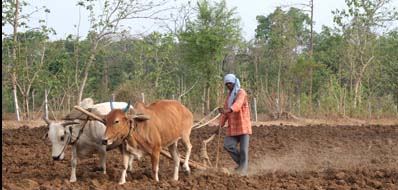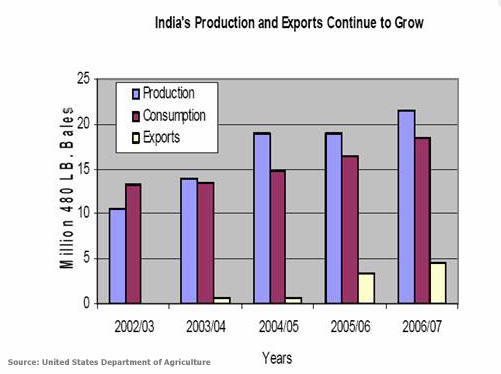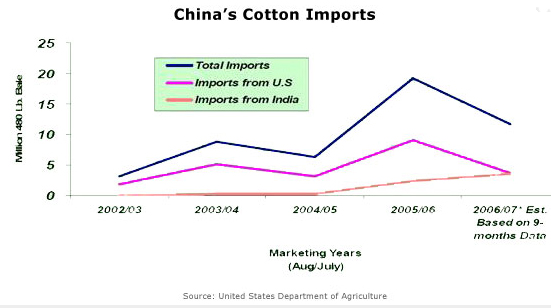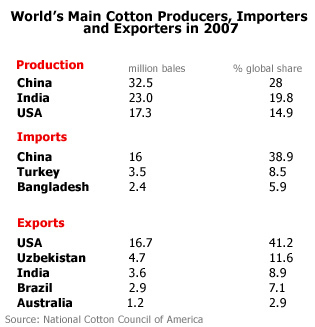India is playing an ever-important role in the world’s cotton market. Set to bypass the United States and become the world’s second largest producer of cotton in 2007, India has seen its cotton sector undergo critical changes in recent years. This handbook explores the various facets of cotton production in India — from the introduction of biotechnologies and the subsequent increase in production to the despair of small-scale cotton farmers — and analyzes the domestic and international forces at play. Cotton subsidies and agricultural policy are closely examined.
Production Trends in India
Ever since the government of India authorized the commercialization of Bt cotton in 2002, cotton production has soared. From 2002 to 2006, production doubled from 11 million bales to 23 million bales. India is expected to overtake the U.S. as the world’s second largest cotton producer in 2007. The recent increase in Indian cotton production has outpaced the domestic needs for cotton, making India the third largest exporter of cotton – most of which goes to China. Only five years ago, India’s cotton exports were insignificant.
Production Trends in China
China is the world’s largest producer of cotton. It is also the world’s largest importer and consumer of cotton. China’s imports of cotton practically tripled after the quotas governing global trade in textiles and garment were removed in 2005. Before the agreement expired, Western countries committed to importing pre-determined amounts of garment and textile from select countries. Once these quotas were eliminated, China became the world’s major producer of garment and textile. While cotton production in China has always been substantial, China could no longer meet its consumption needs and needed to significantly increase its imports. This year, however, China’s imports are expected to drop about 40 percent as record yields and increased planted area will result in an all-time-high domestic production of cotton.
Production Trends in the United States
In 2007, the U.S. is expected to drop one rank and become the world’s third largest cotton producer behind China and India. The U.S. remains the world’s largest exporter of cotton. The decline in cotton production in the U.S. in 2007 is partly due to the introduction of additional corn subsidies for biofuel use. These subsidies have encouraged cotton farmers to switch crop. All U.S. cotton growing states but Florida are expected to see their cotton production decline in 2007. U.S. cotton exports are also expected to drop 28 percent in 2007. This decline is due to fewer imports from China and increased competition from India.
Sources: United States Department of Agriculture; International Cotton Advisory Committee; Food and Agriculture Organization of the United Nations; Oxfam America
- Previous: Cotton Subsidies and the World...






